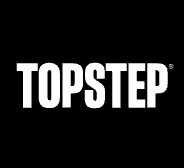Don’t Build a Career on Prop Firms

The Prop Firm Trap Nobody Talks About
Let’s be real for a second — it’s way too easy to get stuck in the prop firm hamster wheel. You pass an eval, get that first payout, maybe two… and suddenly you’re convinced this is it. Your “career” has officially begun.
Except it hasn’t.
I’ve been in this game almost seven years now, actively trading futures with firms like TopOneFutures, FundingTicks, TickTickTrader, and Tradeify. I’ve taken payouts, blown accounts, built new ones, and repeated the cycle more times than I care to admit.
Here’s the thing — prop firms are amazing leverage when you’re learning or scaling up. But they are terrible as your one and only source of income long-term. Not because you can’t make money with them, but because the business model isn’t built for you to “make a career” off their capital.
Props make money from failed evaluations. That’s the engine. You think they’re praying for your long-term success? Nah. They’re praying you buy the next reset.
This doesn’t mean they’re evil. It means you need to understand the game you’re playing — and play it in a way that benefits you first.
My Early Prop Firm Days (And Why I’m Glad They Existed)
When I first started, I didn’t even know prop firms were a thing. I was just that stubborn guy funding his own tiny brokerage account, thinking “I’ll just double it a few times and I’m set.”
Yeah… didn’t exactly go like that.
I blew through thousands of my own money in the first couple of years — including swiping my wife’s credit card more than once (don’t recommend that strategy). No structure. No guardrails. No idea how deep the psychological game really was.
When I finally stumbled across prop firms, it was like finding a cheat code. Back then, the idea that I could risk a couple hundred bucks — or less — to get access to tens of thousands in buying power blew my mind.
And it’s even better now. These days, you can pick up a 50K evaluation for the price of a decent dinner. You get some skin in the game without risking your rent money, and you get to trade under rules that force you to respect risk — something I clearly didn’t at the time.
Were props the magic fix? No. I still failed plenty of evaluations early on. But having those boundaries and that low-cost entry gave me a fighting chance to actually learn without putting my financial life in a blender.
That’s why I’ll never say prop firms are bad. They were the bridge between me being a reckless gambler with a chart and me actually becoming a trader.
Props Are a Tool, Not the Goal
Here’s the mindset shift that changed everything for me:
Prop firms aren’t your career. They’re a tool.
They’re leverage — a way to get more capital exposure for less cost, a way to build discipline under strict rules, and a way to stack some quick payouts to fund something bigger. But they are not the thing you build your future on.
Here’s my personal benchmark: three payouts.
Why three?
Because anyone can fluke one payout. Plenty of traders have lucked their way into a single withdrawal, only to blow every account they touch afterwards. Two payouts? Still possible to be riding luck and variance.
But three? That’s when it starts to smell like consistency. That’s when you’ve proven — to yourself, not just the firm — that you can show up, follow the rules, and extract money from the market without blowing up.
Once you’ve done that, the game changes. You stop dumping all your mental energy into passing the next evaluation and start thinking, “Alright, how do I make this capital truly mine?”
That’s when I take the prop payouts and start funneling them into a personal account. Because here’s the truth — no matter how good the split is, or how “trader friendly” the rules are, you will always be capped and controlled trading with someone else’s capital.
And the market already gives you enough rules to follow. You don’t need a firm adding more on top just to keep their business model running.
Building Your Own Account (The Real Endgame)
Once you’ve hit that three-payout milestone, it’s time to start building something that actually belongs to you.
I’m talking about a personal brokerage account. Your money. Your rules. Your future.
For me, the sweet spot to start is $10,000.
Why 10K?
Because with that amount, you can risk 2–2.5% a day without overleveraging, and still pull $250–$500 per session if you’re trading futures like MNQ/NQ. That’s meaningful money without having to size up like a maniac.
Start with $1K or $2K, and you’ll feel like you have to push size just to make it worth your time — and that’s a fast track to blowing it. Start with 10K, and the math starts working for you instead of against you.
The best part? If you’ve been trading props seriously, you’ve already been operating under way stricter conditions than your personal account will ever impose.
- Trailing drawdown rules? Gone.
- Arbitrary scaling limits? Gone.
- “No trading during news” nonsense? Gone.
You’ll have the discipline baked in from the prop grind, but with the freedom to trade your plan without an account manager breathing down your neck.
I wish I’d done this sooner. Props taught me risk control. My personal account gave me the freedom to finally make trading my business instead of theirs.
Where to Open Your Personal Futures Account
Alright, so you’ve hit your three payouts, you’re ready to funnel some of that prop money into a personal account, and now you’re asking: Where do I actually park this cash?
The good news — you’ve got options. The bad news — if you Google “best futures broker,” you’ll get buried in marketing fluff and affiliate spam. Let’s skip the nonsense and talk about brokers I’ve either used or know well from other serious traders.
1. AMP Futures
AMP is my go-to recommendation for traders starting with around that $10K sweet spot. Low margins, plenty of platform choices (NinjaTrader, TradingView, Sierra Chart, etc.), and reasonable commissions. They’re also not going to nickel-and-dime you with “mystery fees” every month. Just watch their data packages — CME market data is always going to cost you, no matter where you go.
2. Tradovate
Tradovate’s big selling point is commission-free trading for a flat monthly fee, which can be a game changer if you’re an active intraday trader. Their platform is clean, web-based, and easy to use, and they’ve got a lifetime license option if you want to ditch recurring platform costs. Downsides? Some traders find the order execution speed a touch slower than desktop-native platforms — but it’s still solid.
3. NinjaTrader Brokerage
If you’re already comfortable trading on NinjaTrader’s platform, opening an account directly with NinjaTrader Brokerage keeps things streamlined. You get tight integration with the platform, competitive margins, and straightforward pricing. Ninja also has decent educational resources — which is rare in the brokerage space — and their charting is still top tier for futures.
4. EdgeClear
Very trader-focused customer service, low commission rates, and they’ll actually help you tweak margin/risk settings to fit your style. Supports Sierra Chart, Rithmic-based platforms, and more. Think of it as the boutique option — smaller, more personal, but still professional.
5. Interactive Brokers (IBKR)
If you want to trade more than just futures, IBKR is hard to beat. You can run stocks, options, forex, and more from one account. It’s not the cheapest for pure futures trading, and their Trader Workstation (TWS) platform can feel heavy, but the flexibility is unmatched if you like having all your markets in one place.
The “Live Account” Bait
At some point, your prop firm will dangle the “live account” carrot in front of you.
“You’ve proven yourself! Let’s move you to a real money account!”
Sounds like a promotion. It’s not.
Here’s the reality — moving to live is almost never in your best interest. It’s in theirs.
Why? Because in a live setup, their only real risk is whatever profits you’ve already made in sim. They’re no longer paying you out of a theoretical pool — they’re tying it to actual capital, which means their exposure is smaller and more controlled.
For you, it’s the opposite. You now get to pay pro market data fees every month, still follow the exact same restrictive rules, and… congratulations, you’ve traded your flexibility for nothing.
And let’s not pretend it’s a sign of trust or a golden ticket to “the big leagues.” I’ve been on both sides of the fence. Live prop accounts don’t give you anything you couldn’t get — and keep — in a personal account, except more hoops to jump through.
So here’s my take:
- Take your payouts in sim.
- Stack your wins.
- Pull the cash into your own brokerage.
The “path to live” is just another marketing funnel. Don’t get funneled.
The Long Game — Think Beyond Prop Firms
Look, I get it. Prop firms are exciting. They give you access to capital you couldn’t touch on your own. They make you feel like you’ve “made it” when you get that funded email.
But here’s the truth:
If you’re serious about trading for the long haul, your main goal should be trading your own money. Props can be a stepping stone, a side hustle, a scaling hack — but they should never be your entire identity as a trader.
Because the moment you rely solely on them, you’re at the mercy of their rules, their payout schedules, and their business decisions. And if you’ve been in this space for even a year, you’ve seen what happens when a firm suddenly changes the rules or shuts down.
The setup I run now?
- My personal futures account is the bread and butter.
- A handful of funded accounts for scaling advantages and low-cost ROI.
- Zero emotional attachment to any firm.
This gives me freedom, stability, and the ability to adapt. If a prop firm folds tomorrow, I won’t lose sleep — I’ll just shut down the accounts and keep trading my own.
That’s the real win here: independence. Props are the ladder. Your personal account is the roof. Don’t spend your whole life climbing if you never plan to step off.
If you’re still thinking about making props your full-time “career,” don’t. Use them to get started, to learn, to scale — then build something that’s yours. Long term, you’ll thank yourself.
When Prop Firms Still Make Sense
Once you’ve got your personal account up and running, it’s not like you have to swear off prop firms forever. I still use them — just not as my foundation.
Here’s the filter: Does the prop give me something I can’t get with my own money?
If the answer is yes, I’ll run it alongside my personal trading. If not, I pass. Simple.
For me, that “something” is usually scaling.
Take TopOneFutures or FundingTicks, for example. The ability to run multiple funded accounts in parallel and copy trades means I can hit a $1K target in each account and stack payouts that would take far longer in a single personal account.
Same with Tradeify — the structure is clean, payouts are fast, and when I’ve got my own account firing, it’s almost no extra work to mirror the trades into a funded account for extra ROI. TickTickTrader’s in my rotation for similar reasons.
Here’s the point — I’m not depending on these firms to pay my bills. They’re a side engine. A booster. If the payouts stop tomorrow, my main account is still running.
Props are leverage. Milk them when they give you an edge. Drop them when they don’t.
🎁 Win a $100,000 TopOneFutures Challenge
Every month, I’m giving away one 100K Futures evaluation from TopOneFutures worth $225.
⚠️ Exclusively to new newsletter subscribers. Enter your email. Get in the draw. Get weekly high-value content and best offers, no BS.
Enter Now & Win a 100K Challenge

.png)


.jpeg)
.webp)

.webp)
.jpeg)
.png)
.png)
.jpeg)
.jpeg)


.png)

.png)






.png)
.png)
.jpeg)
.jpeg)

.jpeg)
.png)
.jpeg)




.jpeg)


.webp)
.webp)
.webp)